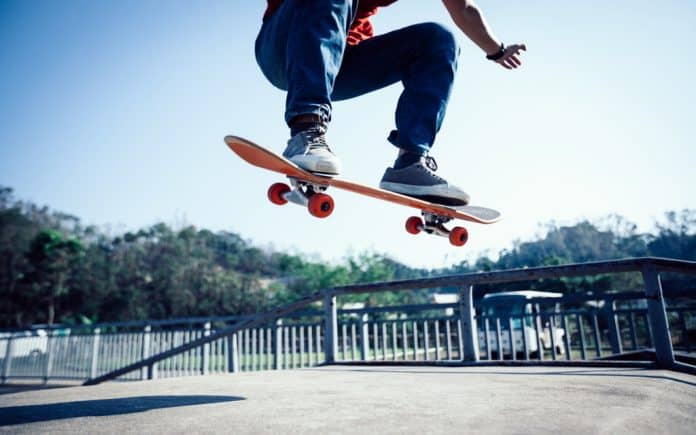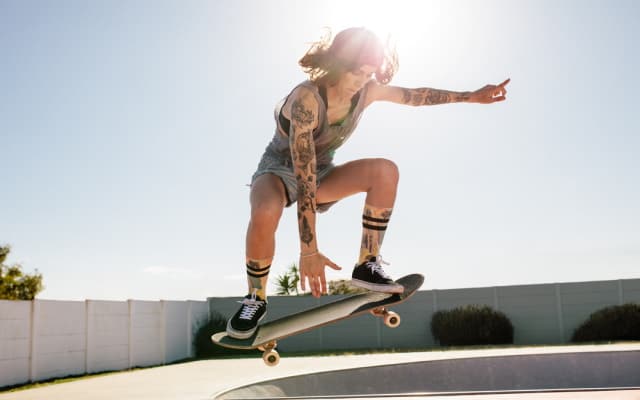Whether you’re a beginner who wants to learn skateboarding skills or a pro who wants to take your expertise to the next level, you’ve come to the right post. Skateboarding entails performing incredible stunts when riding. Although grasping basic skateboarding tricks can be fun and nerve-racking, mastering skateboarding is worth the risk and experience. No skateboarder is born a pro; it takes determination, discipline, and continuous practice.
Regardless of your skateboarding ability, the following tips can help you advance your skills.
1. Choose The Right Skateboard
Investing in the proper skateboard is the first step in improving your skateboard skills. There are different types of skateboards in the market, so it would be best to choose a skateboard that suits your budget, weight, and style. You can buy a ready-made skateboard or select the parts you want and assemble them yourself.
When choosing the parts, settle for a shoe-width deck, medium wheels, trucks, and bearings. If you ride with these skateboard accessories, you’ll experience an enjoyable and comfortable ride. If you have no idea which skateboard to purchase, consider reading reviews of professional skaters to help you out.
2. Embark On The Basics
Many people start skating without understanding the fundamentals. If you’re that guy who engaged in skateboarding without researching the basics, it’s best to relearn the fundamental skills to become a better skateboarder. While the basic skills may seem insignificant and a waste of time, it’s worth noting that these skills will make you progress faster. Some basics include maintaining a comfortable stance, which entails standing on the board and getting a good balance. Your stance is known as regular if you’re more comfortable with the left leg in front of the board. On the other hand, your stance is goofy if your right leg is more comfortable in front. Additionally, try leaning forward, sideways, or backward to improve your stance balance.
Once your stance is on point, you can slowly learn how to roll and tic-tac on the skateboard. Tic-Tacs help you to increase your speed, similar to pushing off the ground. The only difference is that Tic-Tacs are performed with both feet on the board.
To learn tic-tacs, you should start by placing your back foot on the board’s edge and your front foot in the middle. Then gently press your board on the back to lift the front. After that, twist your hips to turn the board’s front, then apply a little weight to bring the board back down. You must repeat the hip movement the other way until you master the technique. Remember that the trick here is to start learning the skills when you’re not moving. Once you get it, you can try it out when riding.
Another crucial aspect of the basics is learning to stop the skateboard when riding. There are two ways to stop a moving skateboard; one is putting the back foot on the ground, and the other is putting more weight on the back of the board that it scrapes off the ground to come to a standstill.
3. Learn To Fall
After relearning the basics, learn how to fall correctly. This is because falling is inevitable in skateboarding; even professionals fall. Learning to fall is a must-have skill for any skateboarder to prevent injuries when riding or practicing new skills. To properly learn how to fall, follow tips, such as avoiding landing on your palms because this can cause injuries to your wrists, especially when skateboarding on concrete or hard ramps.
Moreover, if you’re practicing and run out of tricks, it would be best to bail out and run to maintain the momentum. Doing this will prevent you from falling. Another trick you may try is rolling when falling; you tuck your arms in and flip so you land on your back, which helps reduce the force and momentum of the fall. However, you must first try this technique on the grass to do it properly when skateboarding. Lastly, don’t forget to wear protective gear, such as kneepads, to protect your knees from being harmed by blunt impacts.
4. Visit Skateparks And Meet People With Similar Interests
Trying new tricks yourself is the trickiest part of improving your skateboarding skills. While it’s possible to learn new skills on your own, it’s best to be part of a skateboarding community. Joining a community allows you to make friends and learn new skills from other skateboarding enthusiasts. In skateparks, you can show off your skills and teach one another, thus helping everyone to improve their skills. Additionally, having a committed group can motivate you to improve, practice, and visit the park frequently.
Conclusion
Just like learning any new skill, mastering skateboarding takes time, effort, and discipline. The most important thing in a skateboarding journey is enjoying each part of the process rather than only focusing on the result.




